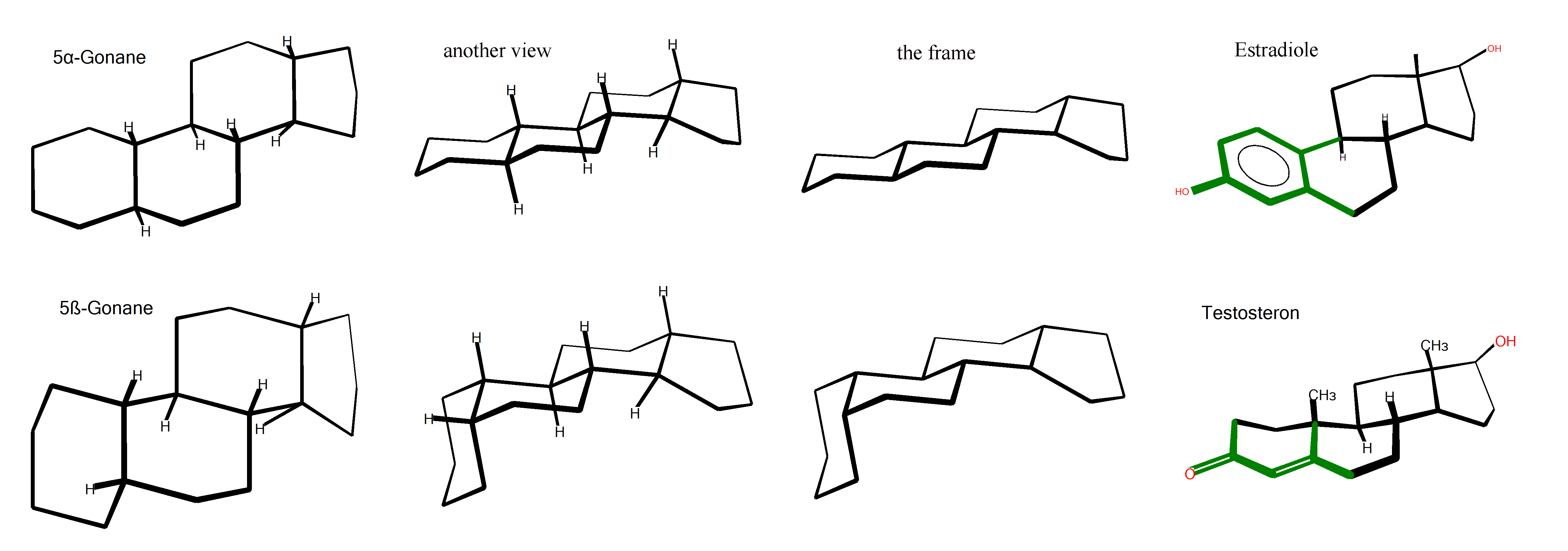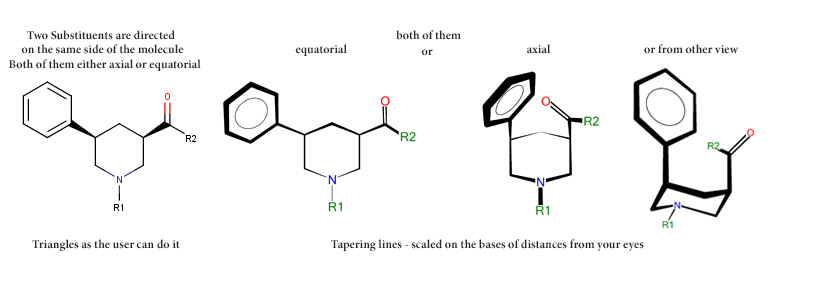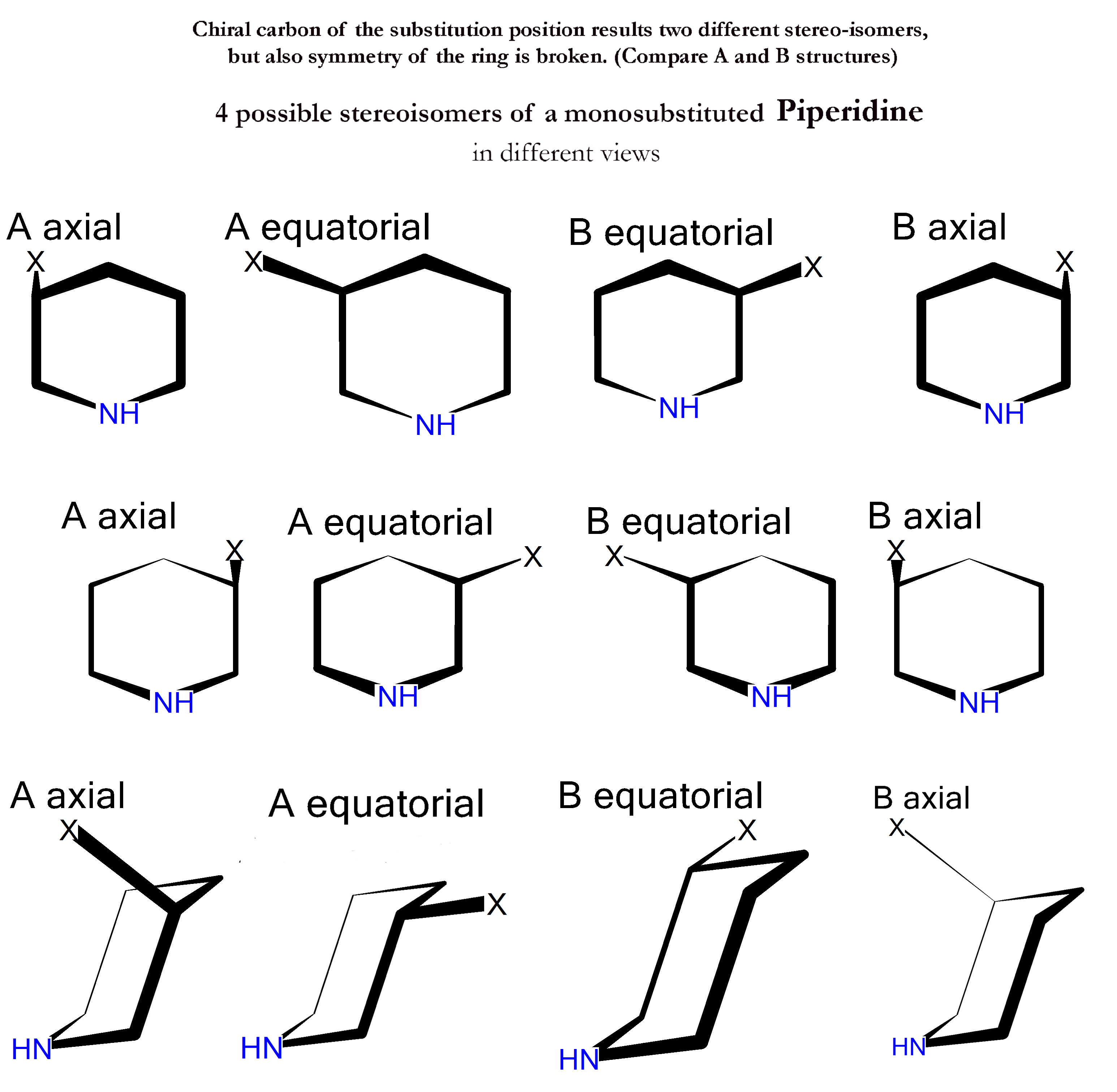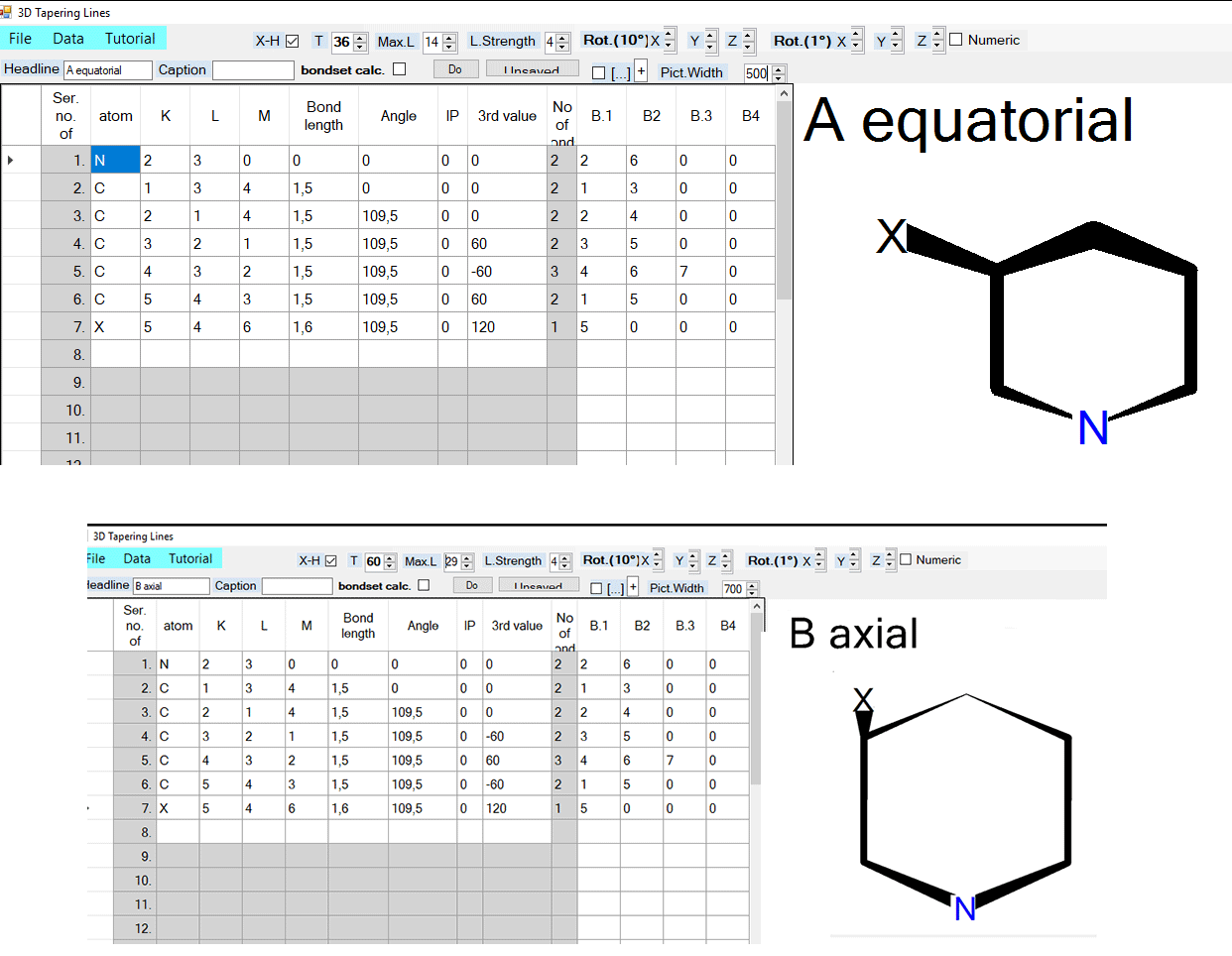3D Visualization in Stereochemistry
using Tapering Lines
About tapering lines
It is specially useful to study and show structures containing more rings or surrounding of chiral centers - compare enantiomers – without any rotation, without any special glass, without any weakening tone. You don't lose the 3D aspect even in representations using static form.

 How to identify
this special type of ring symmetry
How to identify
this special type of ring symmetry

See: not only the new chiral carbon results two different stereo-isomers, but also the symmetry of the ring is broken.
An armchair with one arm or with two different arms is asymmetric. This is a special type of asymmetry,
what I did not meet up to know.
The 4 different possible structure on the picture not rotable one into the other. See the attached picture.
If you suppose an rearrangement of A-B can occur through a higher energy state, then the chiral
C-connected substituent would rearrange equatorial-axial. So its marking would lose its meaning. (Picture only the signe of ring declaring torsion angles are different)

The first version of the program using “Tapering lines” method was developed by M. Farkas in 1980 on Apple II home computer and using GWbasic programing language. Time to time it was refreshed for other computers and other computer languages up to 1991. All of these classic versions did work on classic monitors (Black&White or CGA) without using windows and mouse. This new version uses the new possibilities that the developments of computer technics made possible.
If you have a dataset made in other system you can import them in *.SDF, *.MAE or *.MOL formats, or send us a sample and we'll build it in amongst the import possibilities.
We hope you'll be successful and enjoy using this program.
Best Regards,
the Tomtec Company Team